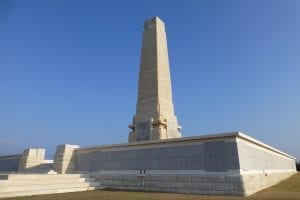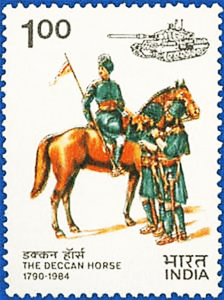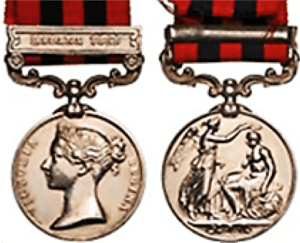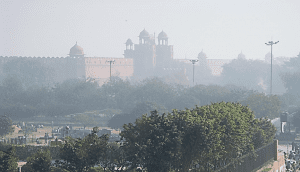MAJOR-GENERAL RICHARD HEARD C.B.E.
1870-1950
On 10 November 1866, the steamer ‘Ceres’ was wrecked off the coast of Wexford. One of the survivors was Dr Robert Lynn Heard of Donaghadee, Co Down. He was the son of Richard Griffith Noble Heard, Chief Inspector of the Coastguards in Kinsale, Co Cork, and Anna Marie Lynn.
Robert Lynn was in the Hampshire Regiment and a mere Captain when he was awarded the Military Cross for operations in North Russia. Later, in 1846, he added the OBE to his MC, for services in NW Europe. Heard served in Tianjin, China in 1961 and won a medal and two clasps for the storming of Taku Fort and the sack of Peking. All this before he was 30 years old! It was time to get married. Heard married Ellen Haughton in the spring of 1865 in the Dublin parish of Taney. Now, with his father, ten month old son, also called Robert Lynn, nurse Bessie and pregnant wife, Ella Haughton, he set sail from Plymouth to Dublin, when the ‘Ceres’ got into trouble. His wife and baby son, Bobby, were the only woman and child to survive the tragedy and Heard wrote a detailed account of the trauma.
The Heards settled in Blackrock Lodge, Blackrock, Co Dublin and went on to have twelve more children after little Bobby. At least four of their sons joined the army but only Richard served in India.
Ricard Heard was born in January 1870 in Donnybrook, Dublin. He acquired a BA from Trinity College, Dublin, and an MB from Royal University of Ireland. Upon graduation in 1893, he went to India with the Indian Medical Service. He was immediately sent to the North West Frontier to tend the wounded in the ferocious battles with Afghan tribes. He won the NWF medal with clasp for Wazirstan 1894-95 and Chitral medal and clasp 1895 when only a young lieutenant.
Three years later, he was still in the NWF in the hill station of Muree, now in Pakistan. Originally a sanatorium for British troops, Muree was the summer capital for the government until it was moved to Simla.
It was here, in the church in Dunga Gali, that the young Captain Heard married Agnes McCrae Bruce Bell in 1897. Agnes was the daughter of Robert Bell, advocate from Falkirk, Scotland. Two of her brothers were in the army – one in the Indian Medical Service, who rose to become Inspector General of Prisons, Burma.
The following year, Agnes gave birth to their daughter, Agnes Marjory Bruce, in Dublin. Two years later they had a son, not surprisingly named Richard. Sadly, Agnes died in 1902 when her son was barely a year old. To compound her husband’s grief, baby Richard followed his mother a few months later in the hill station of Dalhousie. (There is a suggestion that one of Agnes’ sons is still alive. If so, he may have been born between the above two children, unless Agnes died in childbirth.) Cigarette card: Author’s own collection
In 1905 Heard was promoted to Major and married Jane Murray Sophia Palmer in Simla. She was the daughter of Rev Rodney Drake Palmer and was born in Yorkshire. Her mother, Jane Young Michell, may have been Canadian because her parents were married in Ontario. The Heards’ first baby was born in India in 1908 and christened Elfreda Nancy but more popularly known as Fanny.
Heard was posted to the Bombay Presidency in 1909 where he became a member of the Medical Council. Then it was to the North West as Professor of Midwifery in Medical College, Lahore. During this time he took a month’s study leave and wrote the book ‘Feeding in Infancy and Early Childhood’. Upon the outbreak of WWI, Heard worked on two hospital ships – ‘Madras’ and ‘Takada’ – and won the obligatory war medals. He returned to India in 1915 and was stationed in Calcutta.
In 1919, Brevet Colonel Heard was appointed Surgeon to the Viceroy and enjoyed summers in Simla. Departures (and presumably arrivals as well) from the ‘Summer Capital’ were nothing short of military operations. On the appointed morning, guards of honour of the chosen regiment were drawn up at Viceregal Lodge and invited guests were ordered to wear levee dress for civilians and full dress for military officers. The Vice-Regal Salute was fired as the great man and his entourage (including Personal Surgeon, Colonel Richard Heard) trotted out of the gates to begin the journey to the plains for the winter months.
Heard was appointed Honorary Surgeon to the King in 1923. The following year he was made a Companion of the Indian Empire and soon after, promoted to Major General. He took a break of eight months before returning to India where he was made an Official of the Punjab Legislative Council in 1926.
Maj Gen Richard Heard retired in 1924 and went to live in Peebles, Scotland, where he died in 1950. His widow, Jane, died in 1954 in Somersetshire.
His firstborn, Agnes Marjory Bruce, married Clement Lionel Seton-Browne, an officer in the Royal Leicestershire Regiment. Although her husband was born in Grenada, his father, George Seton, and grandfather, Montague George, were both born in India. Agnes died in Edinburgh in 1965, six years after her husband. Their son, Richard Montague, was also an officer in the same regiment as his father.
Heard’s daughter, Elfreda Nancy, by his second wife Jane, joined the Auxiliary Territorial Service and became a Junior Commander. She married Flight Lt Gordon Buchan Watt in Edinburgh. They had at least two children, Anthony Nigel and Marigold Jane – maybe more.
While in India, Heard had joined the Himalayan Brotherhood – a branch of the Freemasons – in 1905 and attended their meetings when he was in Simla.
HIMALAYAN BROTHERHOOD
Freemason Lodge No. 453 began in Fort William, Calcutta, in 1773. Most of its members were Irish Freemasons in the Royal Artillery. It consequently became the Lodge of Humility and Fortitude. Some 65 years later, a group got together in Simla to form the Himalayan Brotherhood. The Lodge operated during the summer months when the Governor General and high ranking army officers moved to the hill station. Otherwise, there were insufficient members to call meetings. They developed their own ritual called The Simla Drill and held meetings in ‘The Hut’ . . . when mating monkeys were not making a racket on its corrugated roof. Over time, members included Rudyard Kipling and the Maharaja of Patiala. Upon the Independence of India in 1947, the Lodge moved to London, bringing its original carpet tassels from Simla and continuing its eccentric rituals to this day. Regalia from an Indian Freemasons Lodge in Freemasons Hall, Molesworth Street, Dublin.









